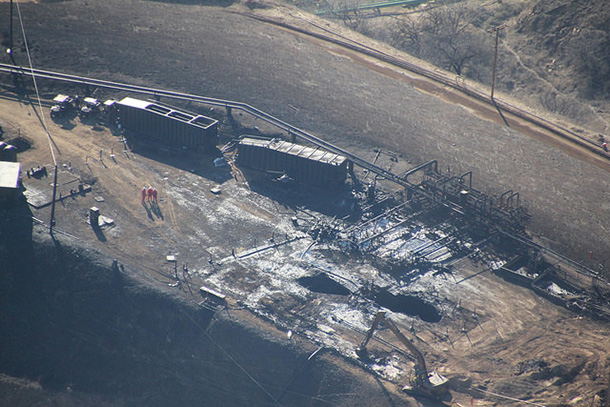California’s Massive Gas Leak: Hazards of Industry Long Known
Expert research, public record details many risks of underground gas storage.
Overhead photo of the leaking Aliso Canyon well pad near the Porter Ranch community in Los Angeles County, Dec. 17, 2015. Credit: Earthworks, Creative Commons licensed.
Since Oct. 23, thousands of citizens have been displaced or sickened with nosebleeds and headaches by hydrocarbon pollution from a leaky injection well site at the Aliso Canyon storage facility, one of the largest underground storage sites in North America.
Industry stores methane underground in depleted oil and gas fields, aquifers or salt caverns for future use because it is more economic than storing the gas in tanks on the surface.
UNDERGROUND GAS STORAGE: A LEGACY OF LEAKS
The gas storage industry, now 90 years old, has experienced lots of gas migration problems and its facilities “can create a serious risk of explosions and risks especially when located in urban settings,” say the petroleum experts who authored Gas Migration.
Leaks occur through faults, wells and cracks in cap rock. Operators admit that during the 50-year life of any operation, methane will leak and erupt into aquifers, soils and the atmosphere.
Decades ago, scientists compared storing methane underground (the gas is lighter than air) to building a room for a bunch of feral cats all trying to escape.
The following incidents illustrate that the Aliso Canyon disaster represents just one of the hazards of injecting and storing gases underground.
Moss Bluff, Texas, 2004: An explosion at this facility north of Houston lit up the sky with 200-foot flames and damaged a wellhead. As a result, the facility released nearly $30-million worth of methane into the atmosphere. More than 100 local residents were evacuated.
…click on the above link to read the rest of the article…
